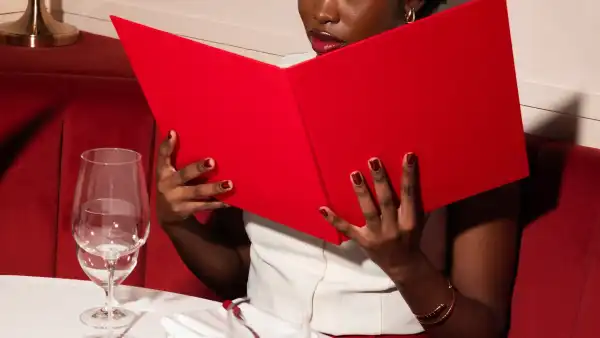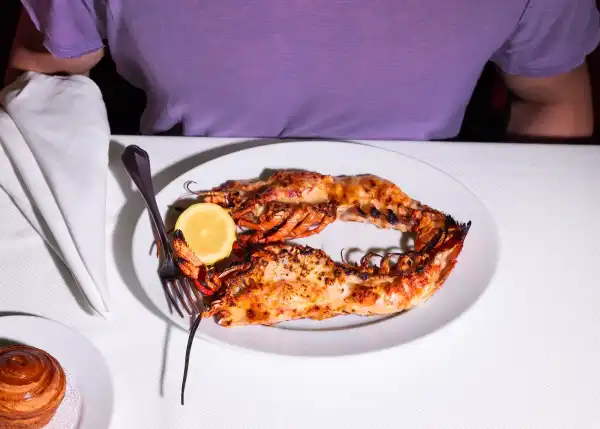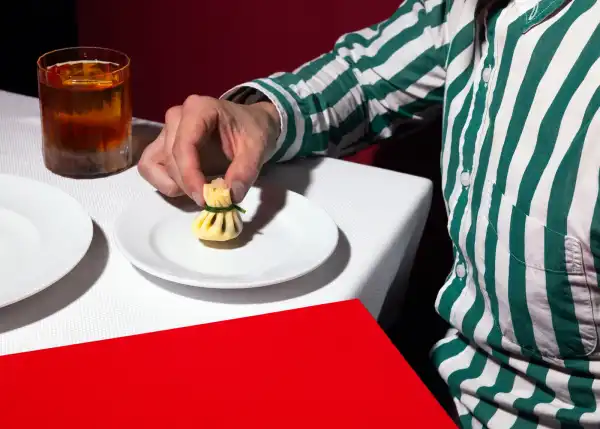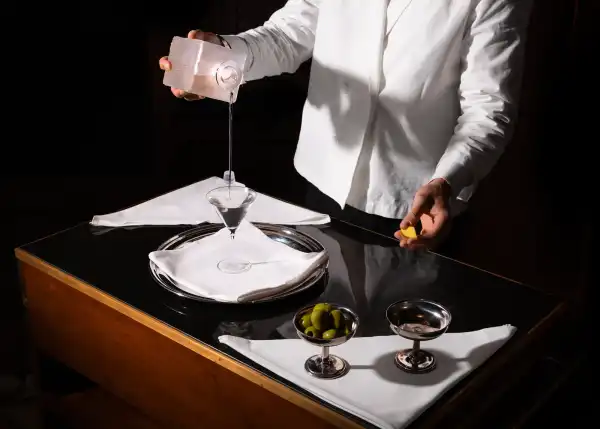
Save this storySave this storySave this storySave this storyYou are perusing the Food Scene dispatch, Helen Rosner’s compendium of culinary recommendations. Enroll to have it delivered directly to your inbox.
In recent times, it appears as though you can barely toss away a cigarette butt in this metropolis without it colliding with a brand-new French establishment showcasing a retro perspective. A plethora of Le and La and L’, Chez So-and-So and Maison Somebody-or-Other, This or That d’Or. If, amid a fog of butter and white Burgundy wine, you took to crafting a spoof of the archetypal eatery for our present-day culinary Franco-bedlam, you’d be hard-pressed to find a more fitting designation than “Chateau Royale,” a moniker both remarkably ubiquitous and delightfully suggestive. It also serves as the name of an establishment that debuted this past summer, within a century-old coach house just south of Washington Square Park, the latest venture from restaurateur Cody Pruitt, of Libertine fame, and his associate, Jacob Cohen. The near-absurdity of it all is flaunted with abandon: waiters in white coats? Foie gras? Snails? Yes, yes, and indeed yes.
Little is particularly ground-breaking about Chateau Royale, yet, to the restaurant’s advantage, this appears to be precisely the intent. Regarding the predictability of the offerings—and, indeed, the overarching ambiance—Chateau Royale embraces it wholeheartedly while maintaining a light touch. At street level, one finds a barroom, moodily dim and cozy; upstairs, in the more refined dining area, ivory-toned walls and a series of windows lend the space a more airy, expansive sensation. Although the selections in each locale share some common ground—at both, one can savor succulent chilled New Caledonian blue prawns perched atop a bed of ice, or a whole steamed artichoke accompanied by a ramekin of zesty béarnaise—they remain entirely separate entities. I found myself preferring the time spent upstairs, where the décor and fare call to mind a more vintage, palatial form of French dining than I’ve grown accustomed to. The food encompasses classics of a bygone era like lobster thermidor, the crustacean bisected lengthwise and enveloped in a cloak of bubbly broiled cream and cheese, which gushes generously from the shell with the slightest nudge of a fork, and a slice of sable, already among the most opulent fish from the sea, presented in a beurre blanc generously flecked with ebony pearls of caviar. There’s an undeniable paradoxical satisfaction to be derived from this sort of extravagant indulgence: a bounty of richness and salt that sidesteps rationale or caloric awareness and makes a beeline straight for the primal brain.

Lobster thermidor.
The sheer intensity is effective, attributable to the restaurant’s decisions regarding portion sizes (not overly generous) and service (not excessively rushed), which allows the palate some respite to collect itself between delighted sighs. In this vein, Chateau Royale is reminiscent of Libertine, Pruitt’s other venture, a seductive, cream-revering West Village bistro where I’ve often pondered whether patrons should be handed a complimentary dose of Lactaid pills alongside the bread and butter. As with Libertine, Chateau Royale presents scant deviations from the richness, even when one might presume they’re opting for something lighter. An endive salad, for example, is saturated in a lavish anchovy dressing, and additionally augmented with a dusting of shaved Mimolette cheese. The sauce accompanying the duck a l’orange, vibrant with bergamot and calamansi, is unctuous and glistening. A scallop crudo finds itself enrobed in luxury, courtesy of a sauce grenobloise, crafted from brown butter with capers, jazzed up slightly with miso, and as dense as peanut butter.
A single, jarringly American insertion interrupts the pervasive Frenchness, an arguably superfluous flourish on a menu whose extravagances are otherwise more subtle: the beggar’s purse, a single-bite canapé wherein crème fraîche and osetra caviar are nestled within a pliable crêpe and bound with a ribbon of chive. While it is frequently, albeit dubiously, alleged to have originated in France, it is a New York fixture through and through: in the eighties and nineties, the beggar’s purse stood as the hallmark nibble of the Quilted Giraffe, the era’s reigning dining destination. (As it happens, Chateau Royale’s head chef, Brian Young, served as a cook at the Quilted Giraffe during that time.) Thanks, perhaps, to its nonchalant, class-warfare-inciting title, the beggar’s purse became a phenomenon, aided, undoubtedly, by its eye-popping price: upon the item’s début, in 1981, the Quilted Giraffe levied thirty dollars apiece; by the decade’s end, the cost had escalated to fifty dollars. Chateau Royale’s beggar’s purses command thirty-nine dollars per ping-pong-ball-sized parcel—depending on one’s perspective, this is either a scandal or an absolute steal.

The caviar-filled canapé known as a beggar’s purse.
Part of the reason this morsel feels so incongruous is that, while Chateau Royale is by no means an economical establishment, it also lacks ostentation or pretension; it feels ill-suited for a dish so overtly derisive. In nearly every other aspect, Pruitt and his personnel appear to be striving to foster a cordial, approachable setting: service is wonderfully affable, with waiters acting as tour guides for patrons through the more sophisticated components of the menu without an ounce of condescension, and welcoming to avid Francophiles spanning all degrees of culinary prowess. One evening, I dined adjacent to a family with a pair of young children, who reveled in both oysters and French fries, to the joy of the entire dining space. A discordant note of a different variety reverberates from the downstairs menu, within the barroom, where the ambiance remains agreeable, and the libations are divine, but where I detected little to commend among the more laid-back edible offerings that were unavailable upstairs. A “club sandwich,” for instance, was composed of lukewarm pulled duck (and single-layered—hardly a club sandwich at all!). A hulking chien chaud (pun intended?) registered less as a playful interpretation of high-low cuisine and more as a cynically overpriced hot dog, albeit one served with a trés français kohlrabi choucroute.

A Martini served from an old-fashioned bar cart.
Helen, Lend a Hand!
Submit your inquiries regarding dining, gastronomy, and all matters pertaining to food, and Helen may address them in an upcoming publication.
The upper level lacks a bar, yet Chateau Royale’s resolution to this practical predicament constitutes my favorite facet of dining there: an antiquated bar cart. A concise selection of mixed drinks—an olive-oil-infused savory Martini, a citrus-tinged Old Fashioned—are pre-mixed downstairs, cooled to near-freezing within crystal decanters, and then transported around the dining area on the cart, to be poured tableside. This mobile bar meanders across the room’s checkerboard flooring with the resonant rumble of a subway train. One gains the impression that the sound is deliberate: someone could readily intervene and repair the cart, tightening an axle or applying a dab of lubricant, but its gentle clatter imparts a sense of presence to the contraption, a touch of cheerful, nonchalant imperfection. Even if you opt to forgo the spirits, it’s worthwhile to conclude your repast with a splash of Champagne—ideally, dispensed from a silver pitcher over a garnet-colored orb of cassis sorbet, a sensationally state-altered kir royale. Finally, a hint of effervescence and levity, a sliver of daybreak at the close of a velvety night. ♦
Sourse: newyorker.com






